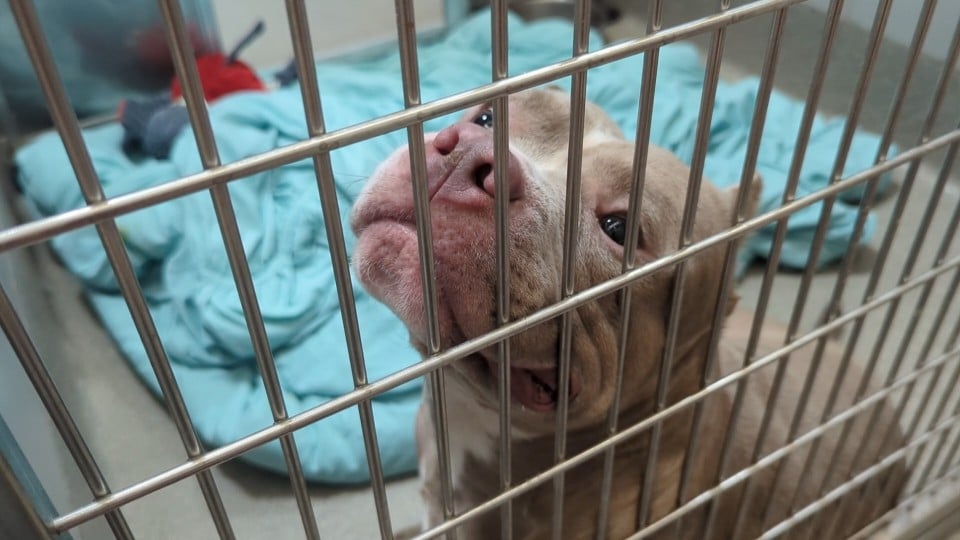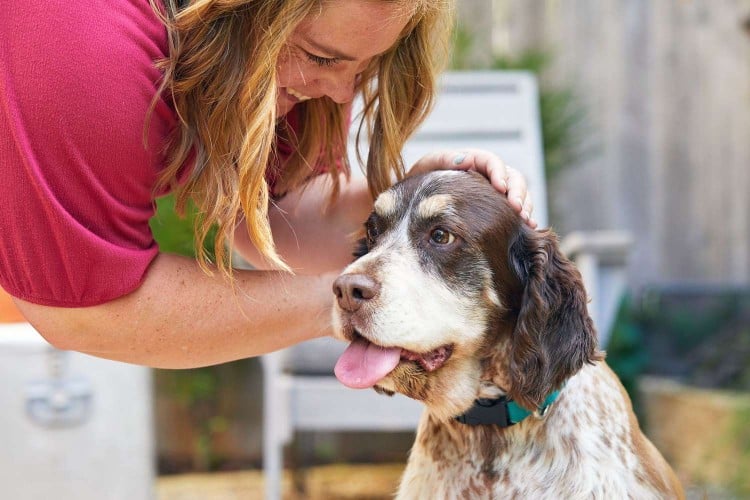Modern preventive veterinary care has helped our dogs to live longer, healthier lives. We can prevent diseases like heartworm, distemper, parvo, and rabies. Sadly, as our pets live longer, the risk of them developing cancer increases due to a variety of factors. Currently, it's estimated that one in four dogs will develop some type of cancer during their lifetimes. Like many health problems though, the earlier you notice and act on a possible cancer diagnosis, the prognosis is often better and the treatment less costly.
Common Signs and Symptoms of Cancer in Dogs
Many of the common early signs of cancer are subtle and nonspecific. It's important for you to know what's "normal" for your dog so that you can quickly identify any changes. When in doubt, remember that your dog has multiples of many body parts, so you can compare legs, ears, eyes, etc. to regularly check for any abnormalities.
Growths or Tumors
The National Canine Cancer Foundation recommends checking your dog for lumps or bumps on the 14th day of every month. This guide from Oregon State University College of Veterinary Medicine is a handy reference for identifying what to look for.
One of the easiest things to notice in terms of potential cancer is a mass or growth. Lumps found on your dog's legs may be the result of arthritic changes, but they could also be cancerous.
As you gently massage your dog, feel for any discrepancies from side-to-side or limb-to-limb. A new lump isn't necessarily cancer, as it may be a benign tumor. Either way, when a lump is caught early and small, surgical removal is much easier. Lameness and rapid growth are signs to worry about. Sometimes, a growth will have an ulcer associated with it. Those are more concerning and need evaluation from your veterinarian ASAP.
Gastrointestinal Tract Issues
Problems such as vomiting, diarrhea, not wanting to eat, drooling, bad breath, and difficulty going to the bathroom may all be signs of cancer in the gastrointestinal areas of the body. This is especially concerning if the signs last more than 48 hours. Weight loss may not be immediately obvious, but often accompanies cancers.
Heart and Lung Problems
A cough or trouble breathing, especially if connected to a lack of interest in play or exercise, may mean a heart or lung problem. Hemangiosarcoma is a fairly common canine cancer that can affect the heart directly. The lungs are often the site of metastases (spread) from cancers in other locations.
If you notice any changes with your pet's health, you should contact your vet. Better to err on the side of caution!
Most Common Types of Cancer in Dogs
The top five most common cancers in dogs are:
Hemangiosarcoma is a cancer of blood vessels. The spleen and the heart are common sites for this cancer to grow. This type of cancer grows quietly inside with few symptoms until it ruptures, so your dog may not actually show any signs ahead of his condition becoming an emergency. You may be able to pick up on a small splenic rupture, as the symptoms include pale gums and lethargy on your dog's part, but often the rupture of either a mass on the spleen or on the heart simply causes your dog to significantly bleed internally, which can quickly lead to death, so it's very important to mention any signs of change in your dog's health, demeanor, or behavior to your vet. Thankfully, it does not seem to be a painful cancer.
Lymphoma is sometimes detected by pet owners who feel enlarged lymph nodes on their dog—under the chin, behind the stifle on the rear legs, or in front of the shoulders. Lymphoma is one of the cancers that can truly be considered curable with early and aggressive treatment.
Melanomas are almost always cancers noted for their black pigment. They tend to grow inside the mouth or on black toes. Sometimes, these will be without pigment, but the black color is characteristic.
Mast cell tumors are usually skin growths that may be confusing. Depending on the action of the cells within, these growths may appear to grow or shrink—even over the course of one day. Often, the growths are noticed due to redness and sometimes ulceration of the area.
Another name for osteosarcoma is bone cancer. This tends to be a malignant cancer that may sneak up on you as you dismiss your dog's lameness as arthritis at first. Generally, families notice lameness and a firm growth located on the dog's leg.
Mammary tumors are growths in the breast tissue of female dogs—most commonly seen in intact (un-spayed) dogs. You may notice a growth, even as small as pea-sized, along the mammary chain when rubbing your dog's belly. Not all mammary cancers are malignant, but even benign ones should be removed.
Spaying Your Dog: What to Know About This Important Surgery
Cancer Diagnosis and Treatment
Diagnosing your dog's cancer will depend partly on what clinical signs you and your veterinarian have noticed. Surgery is often involved—even if not for diagnosis or treatment—to help with staging or grading the cancer. The more information you have, the better you can customize a plan for helping your dog. X-rays are usually part of the diagnostic plan because you want to see if the cancer has spread (lungs are a common place for cancers to spread to). If your dog's cancer has already spread when you diagnose it, the prognosis and treatment plans are very different.
Treatment now has many options. Surgery is one and may be curative. Many times, surgery will be followed by chemotherapy and/or radiation, and immunotherapies are constantly being developed. For example, a vaccine is being used for dogs with oral melanoma as a treatment.
In some cases, you may choose palliative care and simply keep your dog comfortable with a good quality of life as long as possible.
How Much Does Dog Euthanasia Cost?
The Future for Dogs With Cancer
Cancer is not always the death sentence it was years ago. One of my dogs developed lymphoma. He went through chemotherapy and never even missed a meal. Chemotherapy for dogs tends to be milder with fewer side effects than the protocols used for people. He continued to take part in dog sports post-treatment and died three years later of a different cause. Lymphoma in particular tends to be one of the cancers that are more responsive to treatment.
With early diagnosis and starting treatment right away, many dogs can now live years post-diagnosis as opposed to weeks or months. Each case should be looked at as an individual, since each type of cancer acts differently and every dog will respond differently. For example, a young, healthy dog in great physical shape will do better than a senior dog with some other chronic health problems.
One of the best ways to prevent cancers and the associated symptoms is to schedule regular vet visits to get your pet screened. Always make sure to talk with your vet about the best prevention methods and treatment plans for your individual pup!





